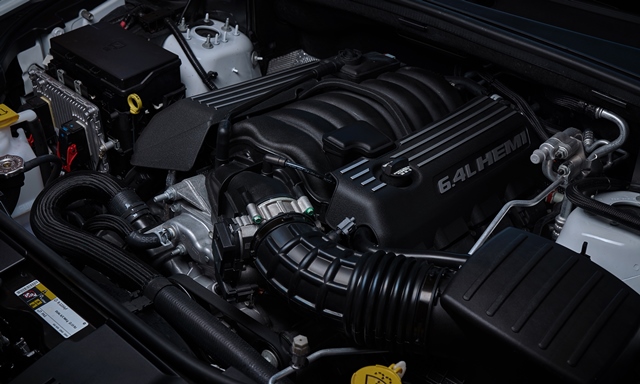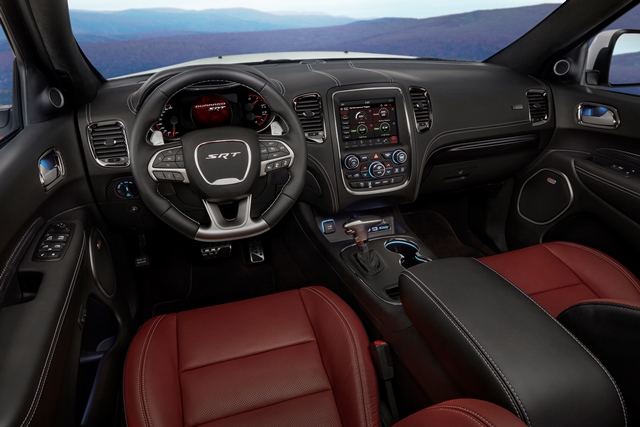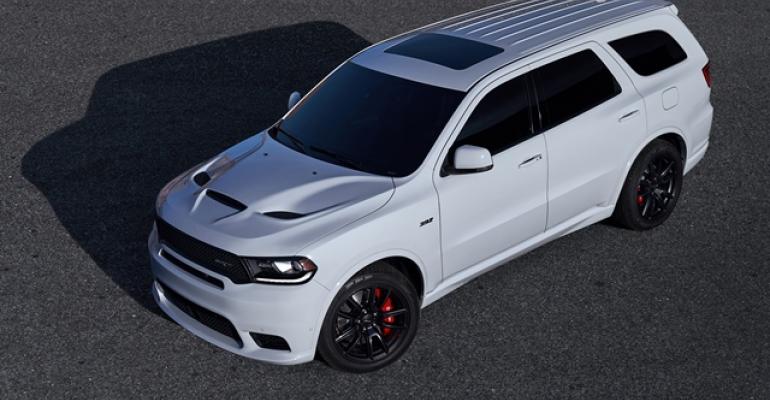Dodge, the designated FCA US mainstream performance brand, finally gets a track-tuned SUV in the form of the ’18 Durango SRT debuting at this week’s Chicago auto show.
“The new ’18 Dodge Durango SRT is America’s fastest, most powerful and most capable 3-row SUV,” says Tim Kuniskis, head of passenger car brands-FCA North America, calling the new model a “7-seat Charger” and a “toy-hauling, 3-row muscle car.”
Powered by a 6.4L Hemi V-8 sending 475 hp and 470 lb.-ft. (637 Nm) of torque to all four wheels via an 8-speed automatic transmission, Dodge says the Durango SRT is capable of 0-60 mph (97 km/h) in 4.4 seconds and a quarter-mile in 12.9 seconds, but can still tow up to 8,600 lbs. (3,901 kg).

FCA has had a performance SUV in the form of the Jeep Grand Cherokee SRT for more than a decade, but never in a 3-row, 7-seater. The Durango rides on a 119.8-in. (3,043-mm) wheelbase, compared with a 114.8-in. (2,915-mm) wheelbase for the Jeep. Kuniskis says the extra inches give the Durango SRT good third-row legroom along with superior cargo space behind the third row.
Designers and engineers put substantial effort into modifications to upgrade the standard Durango to the SRT level. The engine is fed by a cold-air intake and heat extractors in the hood; the transmission is controlled by paddle shifters and an electronic T-handle shifter (in place of the standard rotary knob); and the vehicle’s powertrain and suspension are managed by seven preset drive modes (Street, Sport, Track, Snow, Tow, Valet and ECO), plus a user-customizable mode.
Pete Jacobsen, vehicle development manager, says the SRT draws intake air from an opening in front of the driver’s side wheel well, reducing the intake temperature by 18° F (7.8° C). The result is measurable, Jacobsen says, saving nearly 1 second in 0-60 mph time.
At the other end, the dual exhaust is tuned to sound much like a 392 Hemi Charger, while the suspension is stiffened front and rear. Weight distribution is 52 front/48 rear. Brembo disc brakes bring the 5,510-lb. (2,499-kg) SUV to a stop from 60 mph in 115 ft. (35 m).

A functional integrated front splitter, the “hammer” front grille, integrated wheel-well lips and 20-in. wheels impart a wide, planted look, while the interior gets a hand-wrapped and stitched instrument panel, a 180-mph (290-km/h) speedometer and optional Laguna leather and carbon-fiber trim.
Automatic noise cancellation is standard and activates when the vehicle is in Tow mode or when the engine is operating in fuel-saving 4-cyl. mode.
Production begins in late summer at the Jefferson North Assembly Plant in Detroit, and vehicles will arrive at Dodge showrooms in volume in the fourth quarter.
[email protected] @bobgritzinger





